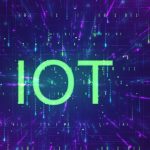The impending rollout of the US Cyber Trust Mark has spurred discussions among industry stakeholders about its implications for connected devices. The Biden-Harris Administration aims to bolster consumer security by mandating that manufacturers comply with new cybersecurity standards and visibly mark compliant products. This initiative follows the UK’s Product Security and Telecommunications Act 2022 (PSTI), highlighting the growing trend of regulatory oversight in the Internet of Things (IoT) sector.
New Security Standards for IoT Devices
The announcement in July 2023 outlined that the US Cyber Trust Mark would soon be enforced, requiring connected device manufacturers to adhere to stringent cybersecurity measures. These devices will need to display a sticker indicating compliance, akin to the PSTI’s approach in the UK. Such regulations aim to create a safer environment for end users by ensuring that devices are secure from the outset.
Challenges for Global Compliance
Iain Davidson, senior product manager at Wireless Logic, highlights the complexities that device manufacturers face due to varying regional regulations. Though the ETSI EN 303 645 standard is frequently referenced, there are concerns about enforcement and specific territorial requirements. This evolving regulatory landscape means that companies must remain vigilant and adaptable to comply with both existing and new legislation.
Towards Universal Security Standards
Davidson also notes a trend towards universal standards for device security, though he acknowledges the challenges of global implementation due to differing international laws. Manufacturers are thus urged to maintain accountability and stay informed about sector-specific standards and upcoming regulations. A comprehensive security strategy is essential to navigate the complexities of international compliance and contribute to a more secure IoT ecosystem.
Comparing this with past reports, the focus has consistently been on enhancing IoT security through regulatory measures. However, earlier discussions primarily centered on individual regions, whereas the current discourse emphasizes the need for global standards. This shift highlights an increasing recognition of the interconnected nature of IoT security challenges and the necessity for coordinated efforts.
Past information also indicated a slower pace of regulatory adaptation. The recent rapid developments underscore a heightened urgency among regulators to address IoT security threats proactively. This change reflects a growing understanding of the potential risks and the importance of staying ahead of emerging threats.
As the IoT landscape becomes more regulated, manufacturers and stakeholders must navigate a complex array of standards and requirements. Ensuring compliance involves not only meeting current regulations but also anticipating future legal shifts. Industry players need to prioritize a proactive approach to security, integrating comprehensive measures throughout the product lifecycle.
The move towards universal security standards, while theoretically beneficial, presents practical challenges due to varying international regulations. Manufacturers must, therefore, strike a balance between adhering to existing laws and preparing for future legislative shifts. Fostering a secure-by-design culture, wherein security is embedded from the product development stage, can significantly enhance the resilience of connected devices.
The emphasis on proactive security measures signals a shift in regulatory philosophy. Rather than placing the onus solely on end users, these regulations encourage manufacturers to take greater responsibility for device security. This shift can potentially lead to a more secure IoT ecosystem, reducing vulnerabilities and mitigating risks associated with connected devices.










